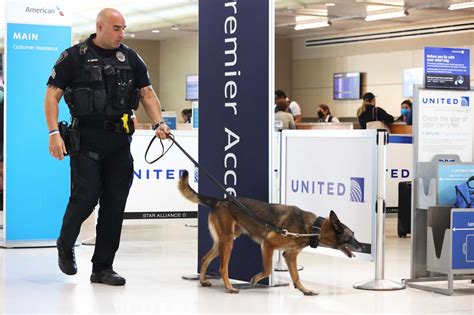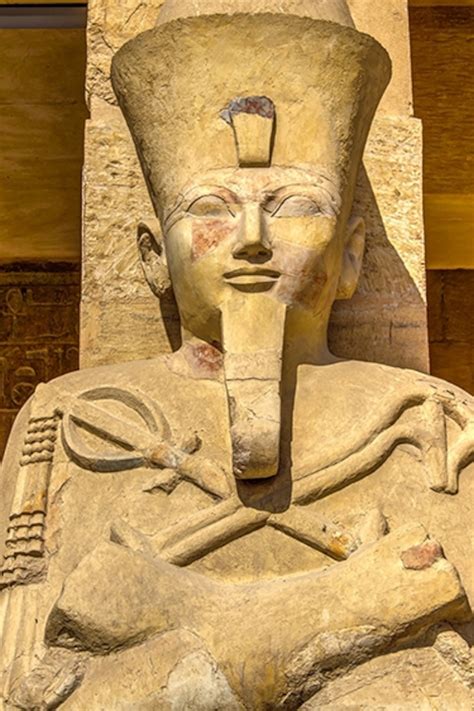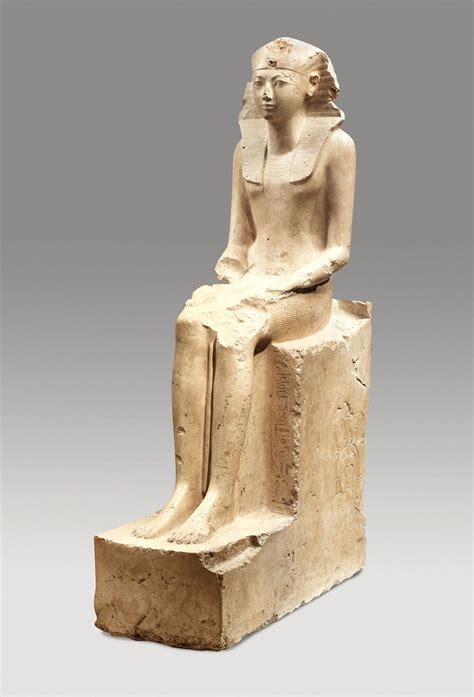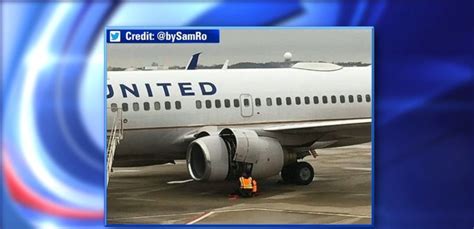
A Colorado man faces charges after allegedly kicking a TSA K9 at Denver International Airport (DIA), reportedly lifting the dog off the ground.
A 45-year-old man from Colorado is facing assault charges after he allegedly kicked a Transportation Security Administration (TSA) canine at Denver International Airport (DIA) on Tuesday, according to authorities. The incident, which reportedly caused the dog to be lifted off the ground, has sparked outrage and raised questions about the safety and treatment of working animals. The suspect, identified as Makonnen Abraham, is accused of assaulting a working dog, a Class 6 felony in Colorado, which carries significant penalties.
According to a statement from TSA, the incident occurred in the A-Gates security checkpoint at approximately 1:30 p.m. local time. The K9, a Belgian Malinois named Caro, was performing routine screening duties when Abraham allegedly approached and kicked the dog. The force of the kick, as described by witnesses and preliminary reports, caused Caro to be lifted into the air momentarily.
“Preliminary investigation reveals the passenger was walking through the A-Gates security checkpoint, and allegedly kicked one of our TSA canines,” TSA spokesperson Lorie Dankers said in a statement. Following the incident, Abraham was immediately detained by TSA officers and subsequently taken into custody by the Denver Police Department.
Caro was immediately evaluated by a veterinarian and, according to TSA, appeared to be uninjured. However, Caro was removed from duty for further observation and care. “Caro was evaluated by a veterinarian and appears to be doing well,” Dankers added. “We are grateful for Caro’s service and wish her a speedy return to duty.”
The Denver Police Department confirmed that Abraham was charged with assault on a working animal. He was booked into the Denver County Jail, and his bond was set at $5,000. Abraham is scheduled to appear in court later this week. If convicted, he could face a prison sentence and substantial fines.
The incident has drawn widespread condemnation from law enforcement agencies, animal welfare organizations, and the public. Many have expressed concern for Caro’s well-being and emphasized the importance of protecting working animals that play a crucial role in ensuring public safety.
“Working dogs like Caro are essential members of our security team,” said TSA Administrator David Pekoske. “An assault on a working dog is not only a crime but also an affront to the dedication and service these animals provide.”
The case is still under investigation, and authorities are reviewing video footage and interviewing witnesses to gather more information about the circumstances surrounding the incident. The TSA is also conducting an internal review to assess its security protocols and ensure the safety of its K9 units.
This incident highlights the risks faced by working dogs and the importance of holding individuals accountable for harming them. Caro’s case serves as a reminder of the valuable contributions these animals make to society and the need to protect them from harm.
Expanded Details and Context
The incident involving Makonnen Abraham and Caro the K9 at Denver International Airport (DIA) has brought to the forefront several critical issues surrounding the use of working dogs in security settings and the legal protections afforded to them. Beyond the immediate charges against Abraham, the event prompts a broader examination of the role of TSA canines, the training they undergo, and the potential consequences of harming these animals.
The Role of TSA Canines
TSA canines are an integral part of the agency’s security operations at airports across the United States. These highly trained dogs are deployed to detect explosives, firearms, and other prohibited items that could pose a threat to aviation security. Their keen sense of smell and ability to navigate crowded environments make them invaluable assets in preventing terrorist attacks and other security breaches.
TSA utilizes various breeds of dogs, including German Shepherds, Labrador Retrievers, Belgian Malinois (like Caro), and others, each chosen for their specific skills and temperament. These dogs work alongside TSA officers at security checkpoints, baggage claim areas, and other locations within the airport.
Training and Certification
TSA canines undergo rigorous training at the TSA Canine Training Center in San Antonio, Texas. The program is one of the most comprehensive in the world, preparing dogs and their handlers to work effectively in a variety of operational environments. The training curriculum includes:
- Explosives Detection: Dogs are trained to identify a wide range of explosive substances, including traditional explosives, homemade explosives, and emerging threats.
- Odor Recognition: Dogs learn to associate specific odors with explosive materials, enabling them to detect even trace amounts of these substances.
- Search Techniques: Dogs are trained to conduct searches in various settings, including baggage, vehicles, and people.
- Handler Communication: Handlers learn to interpret their dog’s behavior and signals, ensuring effective communication during searches.
- Obedience and Control: Dogs are trained to obey commands and maintain composure in stressful situations.
Upon completion of the training program, dogs and their handlers must pass a rigorous certification process to demonstrate their proficiency in explosives detection. They are then assigned to airports across the country, where they work as a team to maintain aviation security. Recertification is required on a regular basis to ensure ongoing competency.
Legal Protections for Working Animals
In recent years, there has been a growing recognition of the importance of protecting working animals from harm. Many states, including Colorado, have enacted laws that specifically address the issue of assaulting or injuring working animals.
Colorado law classifies assault on a working animal as a Class 6 felony, which carries a potential prison sentence of one to two years and fines ranging from $1,000 to $100,000. The law defines a working animal as an animal that is trained to assist law enforcement officers, firefighters, search and rescue personnel, or individuals with disabilities.
The rationale behind these laws is that working animals provide essential services to society and should be afforded the same protections as human law enforcement officers or first responders. Assaulting a working animal not only causes harm to the animal but also disrupts its ability to perform its duties, potentially jeopardizing public safety.
Previous Incidents and Trends
Unfortunately, the incident involving Caro is not an isolated one. There have been other reported cases of individuals assaulting or interfering with working dogs at airports and other public places. These incidents highlight the ongoing risks faced by these animals and the need for greater awareness and vigilance.
In some cases, the assaults have been intentional acts of violence, while in others, they have been the result of ignorance or misunderstanding. Regardless of the motivation, such incidents can have serious consequences for the dogs involved, potentially causing physical injuries, emotional trauma, and even death.
Law enforcement agencies and animal welfare organizations are working to raise awareness about the importance of respecting working animals and the legal consequences of harming them. They are also advocating for stricter penalties for those who commit such acts.
The Aftermath and Future Implications
The incident involving Caro has raised questions about the TSA’s security protocols and the measures in place to protect its K9 units. The agency is conducting an internal review to assess its procedures and identify any areas for improvement.
One potential area of focus is the use of physical barriers or other protective measures to prevent individuals from approaching or interfering with working dogs. Another is the implementation of enhanced training programs for TSA officers to help them identify and respond to potential threats to the dogs.
The incident also underscores the importance of public education about the role of working dogs and the need to respect their space and boundaries. Many people may not realize that these animals are working and should not be approached or touched without permission.
The Community Response
The Denver community has rallied around Caro and the TSA, expressing outrage over the incident and offering support to the injured K9. Social media has been flooded with messages of sympathy and solidarity, with many people calling for justice for Caro.
Local animal shelters and rescue organizations have also offered their assistance, providing veterinary care and support to ensure Caro’s full recovery. The outpouring of support reflects the deep appreciation for working animals and the commitment to protecting them from harm.
The Legal Process
The case against Makonnen Abraham is now proceeding through the legal system. He has been charged with assault on a working animal, and his case is expected to go to trial in the coming months.
Prosecutors will need to present evidence to prove that Abraham intentionally kicked Caro and that his actions caused harm to the dog. The defense may argue that Abraham did not intend to harm Caro or that his actions were justified under the circumstances.
If convicted, Abraham could face a significant prison sentence and substantial fines. The outcome of the case will likely send a strong message about the importance of protecting working animals and holding individuals accountable for harming them.
Conclusion
The alleged kicking of Caro the TSA K9 at Denver International Airport is a disturbing incident that highlights the risks faced by working animals and the need for greater protections. The incident has sparked outrage and condemnation, prompting a broader discussion about the role of TSA canines, the training they undergo, and the legal consequences of harming these animals.
As the case against Makonnen Abraham proceeds through the legal system, it is essential to remember the valuable contributions that working dogs make to society and the importance of protecting them from harm. Caro’s case serves as a reminder that these animals are not just pets; they are dedicated professionals who deserve our respect and gratitude. The incident also underscores the need for enhanced security protocols, public education, and stricter penalties for those who assault or interfere with working animals. The safety and well-being of these animals must be a top priority, and every effort must be made to ensure that they can perform their duties without fear of harm.
Frequently Asked Questions (FAQ)
1. What exactly happened at Denver International Airport (DIA) involving the TSA K9?
According to reports, Makonnen Abraham allegedly kicked a TSA K9 named Caro at the A-Gates security checkpoint at DIA. The kick reportedly caused Caro to be lifted off the ground. Abraham has been arrested and charged with assault on a working animal.
2. What is the condition of Caro, the TSA K9, after the incident?
Following the incident, Caro was immediately evaluated by a veterinarian. According to TSA, Caro appeared to be doing well but was removed from duty for further observation and care.
3. What charges does Makonnen Abraham face, and what are the potential penalties?
Makonnen Abraham is charged with assault on a working animal, which is a Class 6 felony in Colorado. If convicted, he could face a prison sentence of one to two years and fines ranging from $1,000 to $100,000.
4. What kind of training do TSA K9s undergo?
TSA canines undergo rigorous training at the TSA Canine Training Center in San Antonio, Texas. The training includes explosives detection, odor recognition, search techniques, handler communication, and obedience and control. They are trained to detect a wide range of explosive substances and must pass a rigorous certification process before being deployed at airports.
5. Why are working animals, like TSA K9s, legally protected?
Working animals, such as TSA K9s, are legally protected because they provide essential services to society. They assist law enforcement officers, firefighters, search and rescue personnel, and individuals with disabilities. Assaulting a working animal not only harms the animal but also disrupts its ability to perform its duties, potentially jeopardizing public safety. Many states have laws that specifically address the issue of assaulting or injuring working animals, with penalties similar to those for assaulting a human law enforcement officer.
Additional Information & Analysis:
The Psychological Impact on the K9
While the physical well-being of Caro is of immediate concern, the psychological impact of such an assault on a working dog should not be overlooked. These animals are highly trained and form a strong bond with their handlers. An unexpected act of violence can lead to anxiety, fear, and a diminished ability to perform their duties effectively. The TSA and veterinary professionals will likely monitor Caro for signs of post-traumatic stress or other behavioral changes and provide appropriate interventions. These may include behavioral therapy, retraining exercises, and continued reassurance from their handler. The long-term effects of such an incident can vary depending on the dog’s temperament, the severity of the assault, and the quality of support provided during recovery. A dog that has been traumatized might become overly cautious, reactive to certain stimuli, or less confident in performing its duties. Ensuring Caro receives comprehensive care, including psychological support, is essential for its full recovery and continued service.
The Debate Over Security Procedures
The incident also brings to the fore the ongoing debate over airport security procedures and the balance between efficiency and passenger rights. While TSA K9s are an effective tool for detecting explosives and other threats, their presence in crowded security checkpoints can sometimes create tension and anxiety among travelers. Some passengers may feel uncomfortable around dogs, while others may be concerned about privacy issues related to canine searches. Striking the right balance between security measures and passenger experience is a complex challenge that requires ongoing evaluation and adaptation. The TSA must consider the potential for unintended consequences, such as triggering anxiety or fear, and strive to implement procedures that are both effective and respectful of individual rights. The use of clear signage, trained personnel, and transparent communication can help to alleviate concerns and ensure a smooth and positive experience for all travelers. Furthermore, this event may prompt further review of current safety measures in place protecting these canines and their handlers.
The Role of Social Media
Social media has played a significant role in amplifying the public’s response to the incident involving Caro. News of the alleged assault spread rapidly across various platforms, sparking outrage and condemnation. Animal lovers and advocates have used social media to express their support for Caro and call for justice. The incident has also generated discussions about the importance of protecting working animals and the need for stricter penalties for those who harm them. Social media can be a powerful tool for raising awareness, mobilizing support, and holding perpetrators accountable. However, it is also important to be mindful of the potential for misinformation and emotional reactions. Social media users should verify information before sharing it and avoid engaging in online harassment or threats. A balanced and responsible approach to social media can help to promote positive change and ensure that justice is served.
The Economics of Training and Maintaining K9 Units
The deployment of K9 units in airports and other security settings represents a significant investment in resources. The training of a single TSA canine can cost tens of thousands of dollars, and ongoing maintenance and care expenses add to the overall cost. These expenses include food, veterinary care, equipment, and handler salaries. The economic benefits of K9 units, however, can outweigh the costs. By detecting explosives and other threats, they help to prevent terrorist attacks and other security breaches, which could have devastating economic consequences. The presence of K9 units can also deter potential attackers and create a sense of security among travelers, boosting confidence in the aviation industry. A cost-benefit analysis of K9 units should consider both the direct expenses and the indirect benefits, such as the prevention of economic losses and the enhancement of public safety. Additionally, resources allocated to K9 unit maintenance and improvements to their safety can be seen as a worthwhile investment.
Cross-Jurisdictional Comparison of Laws Protecting Working Animals
The severity of penalties for harming working animals varies across different jurisdictions. In some states, assaulting a working animal is a felony offense, while in others, it is a misdemeanor. The penalties can also vary depending on the type of animal, the nature of the assault, and the resulting harm. Comparing the laws in different states can provide insights into best practices and areas for improvement. Some states have enacted comprehensive laws that specifically address the unique role of working animals and provide enhanced protections. These laws may include provisions for restitution, compensation for veterinary expenses, and psychological counseling for the animal and its handler. Other states may have more general laws that apply to all animals, but do not specifically address the needs of working animals. A review of cross-jurisdictional laws can help to identify gaps in protection and inform legislative efforts to strengthen the legal framework for working animals. This could lead to more uniform protections and stricter penalties across the country, deterring potential offenders and ensuring that working animals are adequately protected.
The Impact on TSA Morale and Public Perception
Incidents like the alleged assault on Caro can have a significant impact on the morale of TSA officers and the public’s perception of the agency. TSA officers work hard to protect travelers and ensure aviation security, often facing challenging and stressful situations. An assault on one of their K9 partners can be demoralizing and raise concerns about their own safety. The public’s perception of the TSA can also be affected by such incidents. If the public perceives that the agency is not adequately protecting its K9 units, it could erode trust and confidence in the TSA’s ability to maintain security. The TSA must take steps to address the potential impact on morale and public perception. This could include providing support and counseling to TSA officers, communicating transparently about the incident, and demonstrating a commitment to protecting its K9 units. By taking these steps, the TSA can help to maintain morale and preserve public trust.
The Ethological Considerations of Working Dogs
The welfare of working dogs requires a careful understanding of their ethological needs, which encompasses their natural behaviors, social structures, and psychological well-being. While these dogs are bred and trained for specific tasks, it’s crucial to ensure that their working conditions and lifestyles cater to their inherent needs. Depriving them of social interaction, adequate rest, mental stimulation, or opportunities to express natural behaviors can lead to stress, behavioral problems, and decreased performance. Ethological research suggests that working dogs benefit from regular off-duty time for play, exploration, and bonding with their handlers. Their training should incorporate positive reinforcement techniques that motivate them through rewards rather than punishment, which can cause fear and anxiety. Understanding the ethological needs of working dogs is essential for ensuring their health, happiness, and long-term effectiveness. It also underscores the ethical obligation to treat these animals with respect and compassion, recognizing their contributions to society while safeguarding their well-being.
The Intersection of Animal Rights and Public Safety
The discussion surrounding the assault on Caro highlights the complex intersection of animal rights and public safety. While working dogs are essential for maintaining security and preventing harm to humans, they are also sentient beings with inherent rights to protection and well-being. Balancing these competing interests requires a nuanced approach that considers both the needs of the animals and the safety of the public. Some animal rights advocates argue that the use of dogs in security roles is inherently exploitative and that alternative methods should be explored. Others support the use of working dogs as long as they are treated humanely and their welfare is prioritized. Finding common ground between these perspectives requires open dialogue, ethical considerations, and a commitment to continuous improvement. It’s crucial to develop standards and protocols that ensure the well-being of working dogs while maximizing their effectiveness in protecting the public. This may involve refining training techniques, improving working conditions, and providing ongoing support and care throughout their lives.
The Future of K9 Security Units: Technology vs. Tradition
As technology advances, there is ongoing debate about the future role of K9 security units and whether they will eventually be replaced by automated systems. Artificial intelligence, advanced sensors, and robotics are increasingly being used for security purposes, offering potential advantages in terms of speed, accuracy, and cost-effectiveness. However, K9 units possess unique capabilities that are difficult to replicate with technology. Their keen sense of smell, ability to navigate complex environments, and adaptability to changing situations make them invaluable assets. Moreover, the bond between a dog and its handler fosters a level of trust and communication that is hard to replicate with machines. It’s likely that the future of security will involve a combination of technology and tradition, with K9 units working alongside automated systems to enhance overall effectiveness. Technology can be used to augment the capabilities of K9 units, providing them with real-time information, remote sensing capabilities, and enhanced communication tools. Conversely, K9 units can provide a human touch and an element of adaptability that technology cannot replicate.









